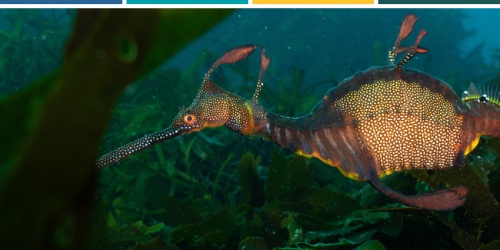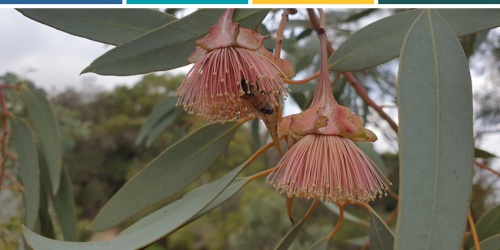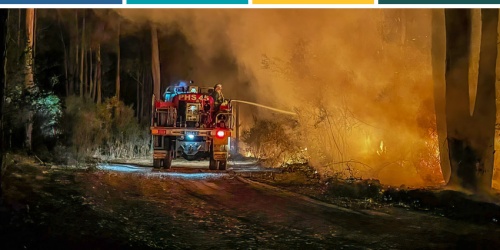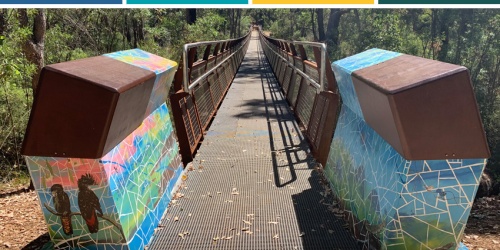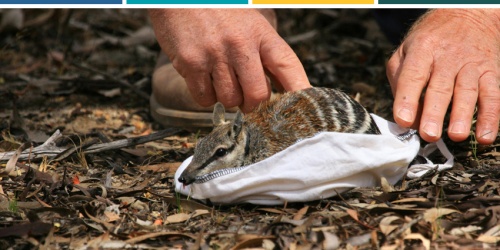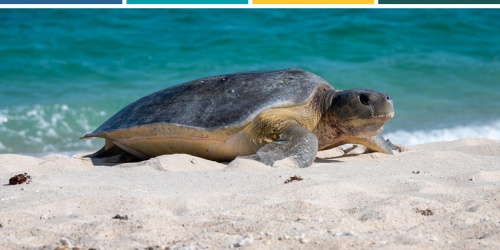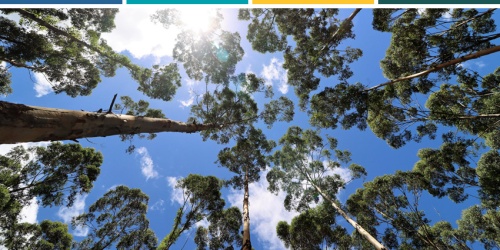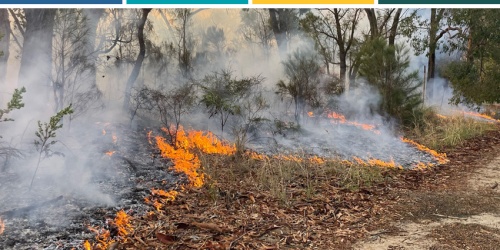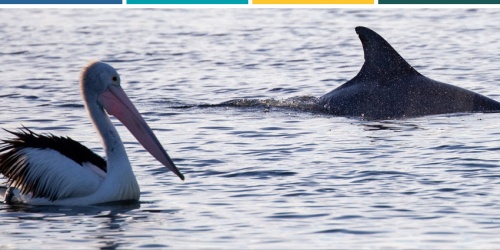Service 4 is responsible for the provision of facilities, experiences and programs for visitors to the Swan Canning Riverpark. This is to enhance visitors’ enjoyment and appreciation of natural, cultural and heritage values and to strengthen community understanding and support for the conservation of plants, animals and habitats.
Performance summary
Table 2: Service 4 performance summary
| 2021–2022 target | 2021–2022 actual | Variance | |
|---|---|---|---|
| Expenses by service | $16,175,000 | $16,397,000 | $222,000 |
| Key efficiency indicator | |||
| Average cost per hectare of managing the Swan Canning Riverpark | $2,209 | $2,239 | $30 |
| Key effectiveness indicator | |||
| Average level of visitor satisfaction in the Swan Canning Riverpark | 85% | 82.20% | (2.80%) |
*The area used in the calculation consists of the number of hectares of Riverpark for which the department is responsible under the SCRM Act. The area includes the Swan Canning waterway (vested with the Swan River Trust) and adjoining public lands (vested with State and local authorities) included in parks and recreation reserves under the Metropolitan Region Scheme. It should be noted that other State and local government authorities listed in Schedule 5 of the SCRM Act also carry out management functions within the Riverpark.
More information on these indicators can be found on the Disclosures and legal compliance page in the downloads section.
Performance highlights
River systems management
- The Swan Canning River system continued to face a range of water quality and ecosystem health challenges in 2021–22. River management initiatives were delivered to protect and enhance the health of the river system, improve understanding of the rivers’ function and optimise land use planning in the Riverpark.
Healthy catchments
- The Swan Alcoa Landcare Program (SALP) provided $281,248 across 22 community groups, to implement 53 catchment restoration projects throughout the Swan Canning catchment. SALP is a grants program administered by Perth Natural Resource Management (NRM) and jointly funded by the department, Alcoa of Australia and the Burswood Park Board.
- Funding of $630,000 was shared among sub-regional NRM groups to coordinate a range of community catchment restoration projects to improve the quality of water entering the river system.
- The department’s Community Rivercare Grants Program provided $350,000 across 17 community groups, to deliver 20 projects that address water quality improvement, foreshore restoration and habitat creation in the Swan Canning catchment. Four key NRM groups received another $125,000 each towards identifying iconic projects within their sub-regions, which will be implemented over the next four years. An additional $150,000 supported the engagement of two community rivercare officers at the Ellen Brockman Integrated Catchment Group and the South East Regional Centre for Urban Landcare.
- Work continued on revegetation and weed control at sites in Lockridge and Mundaring in partnership with Water Corporation’s Drainage for Liveability program.
- Development of the Canning Waterways Restoration Plan commenced, with a working group of representatives from NRM groups and State and local government agencies formed. The plan builds on the 2002 Caring for the Canning plan and recognises the significant management responses achieved since 2002. It will set a long-term vision for the health of the Canning, Southern and Wungong rivers and prioritise issues, strategies and management actions for a five-year period.
Improving river health
- Four oxygenation plants continued to operate and provide oxygen relief to the upper Swan estuary and Canning River above Kent Street Weir. The department assumed responsibility for the oxygenation program in July 2020 and significant repairs and upgrades were made to the two oxygenation plants on the Swan River, to reduce system stress, improve oxygen delivery and reduce power costs.
- The department provided support to the Water Sensitive Cities Transition network, WaterWise Perth Action Plan project working group and sub-regional NRM groups, and technical advice on 32 stormwater management projects.
- Ongoing management and maintenance was conducted on Kent Street Weir and its associated fishway.
- Hydrological and nutrient modelling of the Swan Canning catchment-estuary system continued into 2021–22, with the results to be used to improve and expand on modelling originally undertaken in 2008. This will help inform future revisions to river management strategies and actions.
- Stage two of the performance assessment of the Eric Singleton Bird Sanctuary constructed wetland in Bayswater commenced in partnership with The University of Western Australia (UWA), City of Bayswater and Water Corporation. The project aims to optimise the operation and maintenance of the wetland system and provide guidance to asset managers on the design and operation of gross pollutant traps and constructed wetlands in areas influenced by tide. Through this project, approximately 40 cubic metres of sediment that was high in nutrients and metals was intercepted and removed from the wetland’s sediment trap.
- Monitoring and evaluation of the performance of the Nurdi Park living stream and biofilter system commenced in partnership with the City of Canning, Water Corporation and Perth NRM.
- The findings of the Ashfield Flats Hydrological Study were made available on the department’s website.
Riverbank
- More than $1.5 million, including $500,000 provided via the WA Recovery Plan, was distributed to 16 foreshore land managers for 23 foreshore restoration projects throughout the Riverpark. These included foreshore planning, erosion control, revegetation, weed control, river wall construction, enhancing foreshore and river access, widening vegetation corridors and creating native animal habitat.
- Construction of Djirda Miya, the Black Swan Habitat at Sir James Mitchell Park, was completed in partnership with the City of South Perth in August 2021. Djirda Miya (place of the birds) creates and connects waterbird habitat, restores damaged river walls and provides protection against future erosion.
- The Swan Canning Riverpark Urban Forest program commenced, $360,973 was provided to five strategic native tree planting projects across four riverfront foreshore land managers.
- The department continued to invest $250,000 over four years (2019–23) in The Nature Conservancy’s Swan-Canning shellfish reef restoration project. This includes the provision of specialist advice into a technical advisory group.
Investigations into Riverpark values, threats and mitigation
- The Sediment Taskforce, a multi-agency and peak industry group coordinated by Perth NRM, continued to guide activities to reduce building industry sediment entering Perth’s rivers.
- A foreshore condition assessment of the Southern and Wungong rivers, from Wungong Dam to the confluence with the Canning River, was completed. The assessment included drainage channels from Forrestdale Lake to the Wungong River, with the data informing the Canning Waterways Restoration Plan.
- Information on other science projects supporting the understanding of and mitigation of threats to the Swan and Canning rivers can be found under Service 6: Conserving habitats, species and ecological communities in this report.
Boating Management Strategy
- The department continued to deliver the Swan Canning Riverpark Boating Management Strategy and worked with the Department of Transport (DoT) on marine safety matters in the Riverpark. In 2022 the department formally transferred the management of Riverpark mooring assets to DoT.
Land Management Strategy
- The Land Management Strategy for the Southern River in Huntingdale was completed. This initiative helped identify and resolve unlawful structures and activity along the foreshores of the Canning and Southern rivers.
Events, complaints, incidents and compliance activities
- The department responded to 287 complaints and incidents reported within the Riverpark, a decrease on the 298 complaints and incidents reported in the 2020–21 financial year. Reports received included unauthorised development, rubbish dumping, foreshore damage, oil spills and other general observations.
- Three-hundred and eighty-six compliance actions were taken for a variety of offences and a number of successful compliance initiatives were implemented throughout the year. The department continued to work closely with partner agencies to deliver joint compliance outcomes including the annual commercial tour operator information session, Perth Skyworks and cross-authorisation of Riverpark officers.
- Eighty-eight proactive compliance boat patrols were completed, resulting in 626 vessel contacts and a variety of compliance related notices being issued. The majority related to DoT marine safety offences such as exceeding speed limits, lack of safety equipment and skippers not holding approved Recreational Skippers Tickets. Two foreshore vegetation protection signs were installed in the Riverpark to help reduce vegetation damage and educate the public about the value of shoreline vegetation.
Maintaining the Riverpark’s amenity
- The department’s annual program of removing rubbish and dumped materials, reshaping eroded beaches, conducting foreshore protection works and responding to incidents such as fish kills, algal blooms, injured wildlife, hydrocarbon and sewage spills and other pollution events continued.
- No fish kills or algal blooms occurred during 2021–22. More information on the department’s ongoing response to the Alexandrium algal issue can be found under Service 6: Conserving habitats, species and ecological communities and Service 7: Research and conservation partnerships.
- Replacement works for the jetty at Sandy Beach Reserve within the Town of Bassendean were completed in July 2021.
- In collaboration with the Fairy Tern Network and the City of Melville, work was undertaken to improve conditions for successful breeding of the threatened fairy tern (Sternula nereis nereis) at Point Walter Spit. This included temporary fencing, signage, community education initiatives including targeted social media and improving the surrounding vegetation.
River Journeys project
- Work continued to plan, develop and liaise with river foreshore land managers to further implement interpretation nodes as part of the River Journeys project. Planning is underway for nodes at Redcliffe Bridge in Ascot, Banks Reserve in Vincent and along the Burswood foreshore.
Visitor satisfaction
- A face-to-face visitor satisfaction survey, consisting of 250 interviews at 25 foreshores, parks and reserves around the Riverpark was undertaken. Average satisfaction levels were 82.2 per cent, just below the target level of 85 per cent.
New leases
- A new River reserve lease agreement was implemented for the Scotch College boatshed in Freshwater Bay, Peppermint Grove.
Statutory assessments
- The department issued 128 approvals for works or activities in the Swan Canning Development Control Area and provided advice on 154 development and subdivision applications that were in, next to, or affecting the Swan Canning Development Control Area. Eight development applications were assessed, and recommendations made to the Minister for Environment under Part 5 of the SCRM Act.
- Twenty-five tourism operator licences and 18 aquatic activity licences were granted on the Swan and Canning rivers, increasing the variety and number of commercial operations within the Riverpark. A further 28 operators were approved to use the foreshore, primarily for events, pop-up installations and food and beverage outlets.
- The department continued to work with Tourism WA to provide advice on key commercial development projects and activities. On behalf of the Swan River Trust, the department assessed and provided advice to the Western Australian Planning Commission (WAPC) on the Tawarri Hot Springs proposal in Dalkeith.
- Support to local and State Government agencies in State Administrative Tribunal matters regarding the Swan Canning River system continued to be provided by the department.
New Riverpark bridge crossings
- Main Roads WA continued construction of five bridge crossings on the Swan and Helena rivers, within the Swan Canning Development Control Area. The duplicated Redcliffe Bridge now spans from Belmont to Bayswater and the department is engaging with the Tonkin Gap Alliance during the remainder of construction to continue to mitigate potential environmental hazards. Advice is also being provided during design development for the post-construction reactivation of the site. Following assessment by the department, the Swan River Trust provided planning and environmental advice to WAPC for the Lloyd Street Bridge project. Development approval was granted in late 2021.
Strategic activities
- As part of the Small Business Development Corporation’s Small Business Friendly Approval Program, the Swan Canning Riverpark was selected for a tourism approval pilot project. Ways to improve the customer experience when applying for approval to operate a tourism business in the Swan Canning Riverpark are being explored.
- A new draft locality planning corporate policy and nine locality plans for the Swan Canning River system were released for public comment. The documents will provide specific locality-based guidance for development proposals. The previously endorsed Perth Water Buneenboro Locality Plan and associated Action Plan are being implemented.
- Amendments are being prepared to the SCRM Act and Swan and Canning Rivers Management Regulations 2007 to streamline the Development Control Area boundary amendment process and clarify the granting of licences and permits to avoid duplication.
Water Sensitive Cities program
- The department contributed to a number of joint State and local government urban development industry and university research initiatives to improve water sensitive urban design and protect the Swan Canning River system and other valuable Western Australian biodiversity and attractions.
- Support continued for the New Water Ways water sensitive urban design capacity building program. Support also continued for the implementation of a water sensitive Perth and Peel through membership of the Water Sensitive Transition Network and delivering actions from the Network’s new Vision and Transition Strategy for a Water Sensitive Greater Perth – Implementation Plan (2022–24).
- The department became a joint partner with the Department of Water and Environmental Regulation (DWER) in the new national Water Sensitive Cities Australia research-to-practice mainstreaming program. This included establishing national and Western Australian projects. The department also became a partner in the next stage of the Waterwise Perth and Peel plan, which is being led by the Minister for Water and DWER.
- The UWA and Clean Air and Urban Landscapes Hub project – Noongar Water Knowledge in the Djarlgarro Beeliar catchment: Implications for land-use and water planning – continued to receive support from the department in the form of funding and employees’ time.
- The department provided input to the Department of Planning, Lands and Heritage on the draft State Planning Policy 2.9 – Planning for Water and associated guidelines and datasets. The department also contributed to the update of the public open space module of the Local Government Guidelines for Subdivisional Development.
Swan Canning River Protection Strategy
The department continued to work with members of the Swan Canning River Protection Strategy (SCRPS) Advisory Group on the implementation of key SCRPS river management actions and reporting to the Swan River Trust.
- The draft SCRPS five-year review was completed in May 2022.
Stakeholder education
The department provided regular stakeholder updates on incidents and continued to contribute to the interagency public education campaign on the Alexandrium algal bloom issue which was ongoing in 2021–22.
Community engagement
The department supported community events including Recfishwest fishing clinics in the Riverpark, Perth Skyworks, a variety of river clean up events, Dolphin Watch Trophy Day and Reel It In Trophy Day yacht races and the Avon Descent, and undertook a variety of community engagement projects to support behaviour change and citizen science initiatives for the Swan and Canning rivers.
Plastic Free Riverpark program
- The program commenced with the employment of a program coordinator and the development of two grant streams to help reduce single use plastic in and around the Swan and Canning rivers.
- The program engaged over 60 businesses and over $20,000 in small grants were awarded to 36 riverfront businesses to participate in behaviour change initiatives including reusable cup library schemes, water refill machines, eco-friendly solution products and customer education.
- The program engaged specialist waste advisor, the Boomerang Alliance, to ensure riverfront businesses were aware of the WA Plan for Plastics and to identify where zero waste practices could be adopted. A total of 28 businesses completed an induction with the Boomerang Alliance.
- Four riverfront local government authorities – the cities of Canning, Melville and Perth, and the Town of East Fremantle – shared $40,000 in program funding to help eliminate single use plastic waste from major community foreshore events that attract over 5000 people. Ten thousand dollars was provided for research by Curtin University and the department’s Rivers and Estuaries Science program to identify priority Riverpark drains where single use plastics and microplastics enter the rivers.
River Guardians program
- The program now has 2817 subscribers and continued to provide RiverWise training, volunteering opportunities and presentations from scientists and behaviour change experts addressing key issues impacting the Swan and Canning rivers.
- River Guardians partnered with Native Animal Rescue, WA Seabird Rescue and Recfishwest to help reduce wildlife entanglements from fishing line.
- Two RiverWise gardening workshops were delivered in Spring 2021. Eighty eight of the 174 participants responded to an online questionnaire which found 70 per cent correctly identified the key take-home messages of using less fertiliser, minimising nutrient run-off and being more waterwise. Two additional RiverWise gardening workshops were held online in Autumn 2022 attracting 126 participants.
Dolphin Watch
- There are now 1583 trained Dolphin Watch volunteers who contributed over 31,000 reports on the Riverpark. The new user-friendly Marine Fauna Sightings app was upgraded to help improve data collected by Dolphin Watch volunteers.
Reel It In
- The Reel It In fishing line bin project now has 71 dedicated fishing line bins at popular jetties, fishing platforms, traffic bridges and foreshores throughout the Riverpark. Project participation included 15 riverfront councils plus Fremantle Ports, Hillary’s Marina, the cities of Joondalup, Wanneroo, Stirling, Rockingham, Bunbury, Mandurah and Albany, the shires of Manjimup, Busselton, Northampton, Shark Bay and Esperance and Rottnest Island. During the year the bins collected over 28km of fishing line, 4450 hooks and sinkers, 2200 bait bags and over 12,000 pieces of general rubbish.
- There are now 93 volunteers who have adopted fishing line bin sites throughout the Riverpark.
